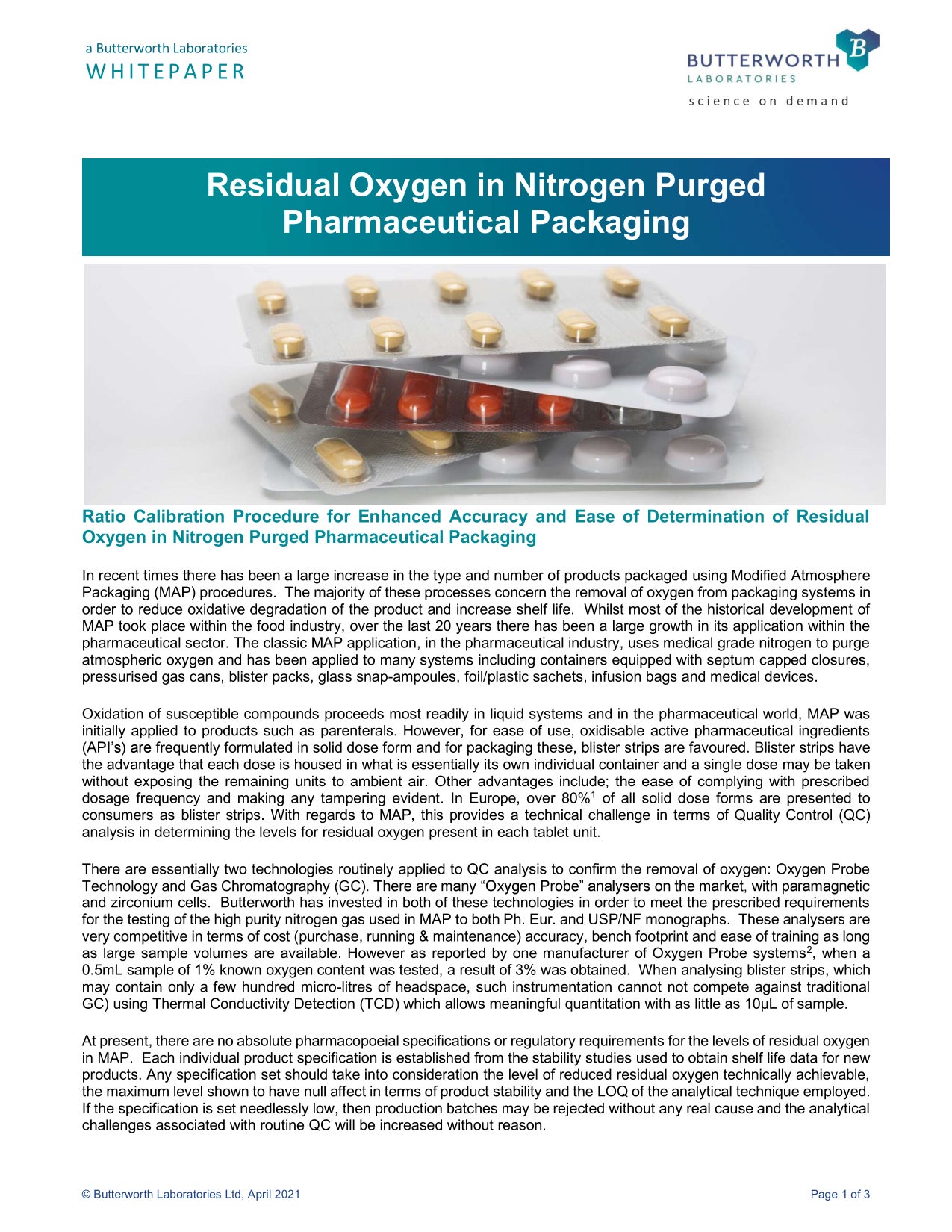
An Active Pharmaceutical Ingredient (API) is the term used to refer to the biologically active component of a drug product, while an excipient is often defined as an inactive substance that serves as the vehicle or medium for a drug or other active ingredient. This often leads to the misunderstanding that an excipient is an inactive ingredient. That excipient can be referred to as inactive appears to derive from the fact that they are seen solely as ingredients used to produce a tablet, cream or solution that allows a patient to receive the API. However, excipients often perform vital and active roles in medicines, including:
- helping to control the bioavailability of an API to meet specific requirements
- assisting with binding and coating in the drug manufacturing process
- performing a critical role in stabilising unstable components such as proteins
- the use of colourings and flavourings to mask unpleasant tastes or odours and allow easy identification of different drugs.
Perhaps some of this misconception or poor terminology comes from the fact that excipients are often not initially developed and manufactured to be used by the pharmaceutical industry – the origin of excipients are often in another industry altogether. For example, a material designed and developed primarily for the automotive industry may have the right characteristics for use in a pharmaceutical product. The safety data, specifications and testing requirements for the material may be perfectly sensible for use in the automotive industry, but it should not be taken for granted that these would be sufficient for its use in a medicinal product. Whilst the primary component could be known to be safe, consideration must also be given to the related impurities that may be the result of the manufacturing process.
As such, it is essential that pharmaceutical manufacturers ensure the specifications and quality control for excipients are handled with the same diligence as with APIs. But is this the case?
The publication Tablets & Capsules stated in its October 2019 issue that the FDA’s Center for Drug Evaluation and Research (CDER) issued 38 warning letters to pharmaceutical firms in the US and 12 other countries for failing to test the identity of incoming excipients or failing to verify the information on excipient suppliers’ certificates of analysis (COAs) at regular intervals. This was a significant increase on previous years and indicates that the FDA understands the significance of excipients and their control in the manufacturing of safe medicines
The risks of not conducting excipient testing
Glycerol (or glycerine) is a popular alcohol used within the food, pharmaceutical, and personal care industry. However, there have been many cases over the years of glycerol adulteration identified by regulatory agencies, usually involving diethylene glycol (DEG) as the adulterant. In Haiti in 1995/6, 88 children tragically died of DEG poisoning, involving cough syrup and a similar incident occurred in Panama in 2006.
As a result, the FDA stipulated a safety limit of 0.1% w/w DEG in products. Working with the FDA, the USP developed a Gas Chromatography (GC) method capable of separating and quantifying glycerine, ethylene glycol and DEG and published a revised monograph, which continues as the standard used today. Alongside this, they also developed a process through which certification can be achieved – Certified Reference Materials – to aid traceability.
It is therefore essential that all components used in the pharmaceutical manufacturing process and not just the active ingredients, must be assessed and tested to full monograph specifications. Limited testing such as a simple ID may not be adequate and may present a risk. A more recent example is the issue with Sartans, where there is evidence that recycled solvents containing NDEA or NDMA are a source of contamination.
As excipients can comprise up to 90% of a pharmaceutical product, they are being increasingly identified as important to the performance of drug development. This greater understanding of the critical role and performance of excipients has led manufacturers of both drug products and excipients to develop novel excipients. The FDA currently does not review the safety of novel excipients outside the context of an investigational new drug (IND), new drug applications (NDA) or biologics license application (BLA). However, in response to requests from various stakeholders, the FDA is now looking at ways of introducing programs to address this issue.
One of the ways that pharmaceutical and biotech companies are ensuring the quality and performance of excipients is by engaging testing laboratories, such as the UK’s Butterworth Laboratories, who specialise in the QC testing of raw materials. Butterworth Laboratories applies the same level of attention to detail to both APIs and excipients.
John Welch, associate director – Business Operations for the company told Pharmaceutical Technology: “It is becoming increasingly important that excipients meet specifications set for them by the formulators and regulatory authorities. When clients approach us, we help them make full use of Pharmacopoeial Monographs and CRMs, along with our in-house knowledge of QC testing, to ensure all materials meet their required specification.
“Where Butterworth Laboratories come across issues with the published monograph methods, we notify and seek advice from the relevant organisation and as a result have seen one or two updates published reflecting the issues raised,” he concluded.
Welch said that Butterworth often works with pharmaceutical and excipient manufacturers to apply their knowledge and experience in the developments and validation of new methods, or modification of existing procedures, to ensure the compliance of raw materials to their required specifications.
“In addition,” he concludes, “There needs to be a way to try and ensure that any new testing methods developed for quality control analysis are shared with the pharmacopoeia organisations so that new monographs can be promptly published and associated CRMs made available. This would bring greater consistency to the results generated between different testing laboratories as well as assurance to manufacturers that their pharmaceutical products meet the stringent safety requirements of the regulatory authorities.”



